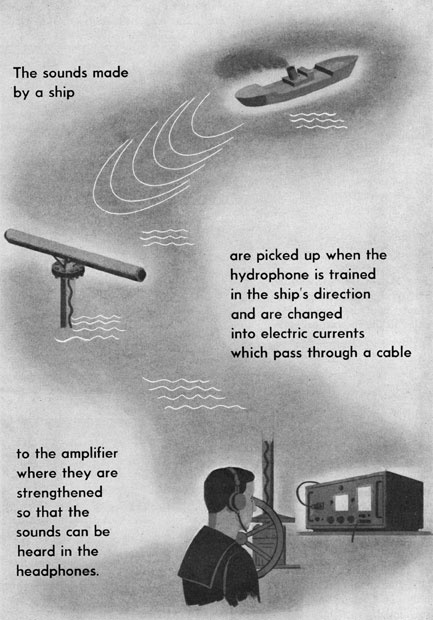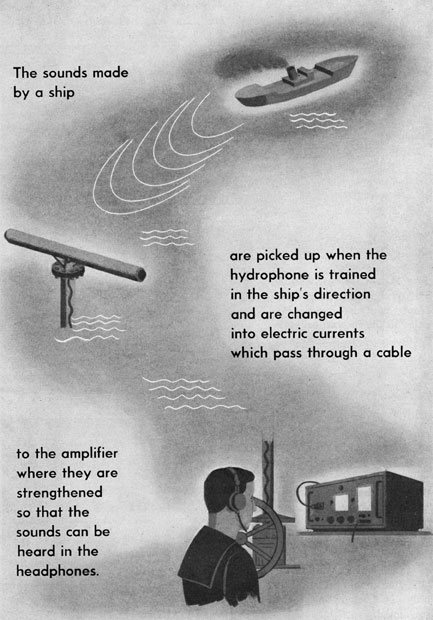Hi, Tautog here. Morgane wanted me to explain the basics about sonar.

There are two types of sonar – passive and active. Passive sonar is like a giant microphone – you listen for the sound of ships and the direction they are coming from. Modern sets can even identify different types of ship just from the sound they make! We’ll probably talk more about this later, but this is what one looked like in World War 2.

Active sonar is the stereotypical pinging sound you hear in movies. You send one of those pings towards an object, the ping bounces back to you, and you measure the time it takes to bounce back. Since the speed of sound in water is known, with a little math you can find out just how far something is.
Submarines generally just use passive sonar. Active sonar is rarely used as it also broadcasts your location to anyone else who is listening. Not a smart move if you’re trying to stay hidden! Not that there’s no use for Active sonar – During the cold war Soviet submarines would rapidly ping American submarines so they couldn’t hear anything with their passive sonar.
Now that you know a bit of how sonar works, I figured it’d be a good time to explain how to counter it. The counter to passive sonar is quite simply to make the boat quieter.

(A note from Cusk. This is easier said than done, of course…)
Whether that means putting rubber noise-dampeners around the equipment, turning off non-essential equipment, or telling the crew themselves to shut up doesn’t matter. If the boat is quiet, passive sonar has a harder time listening in. Normally submarine crews are trained to rig the submarine for “silent-running” – this means that all non-essential equipment is shut off, the submarine restricted to very low speeds, and the crew going hush-hush.
Alternatively, since passive sonar has a limited range, you can just dive deeper.
Active sonar is harder to counter, since it relies on sound waves bouncing off of you instead of just listening for you. One way is simply to reduce the surface area the sound waves have to bounce off of you. If you point your bow directly on to the enemy ship, you give the sound waves less to bounce off of than if you were side-on. Modern subs have a sonar absorbent coating around them, which absorbs the sound waves so they can’t bounce back. The stuff’s largely classified, so I can’t really tell you how it works. Sorry.
And, as with almost everything in the submarine world, you can always just dive deeper. 😉

